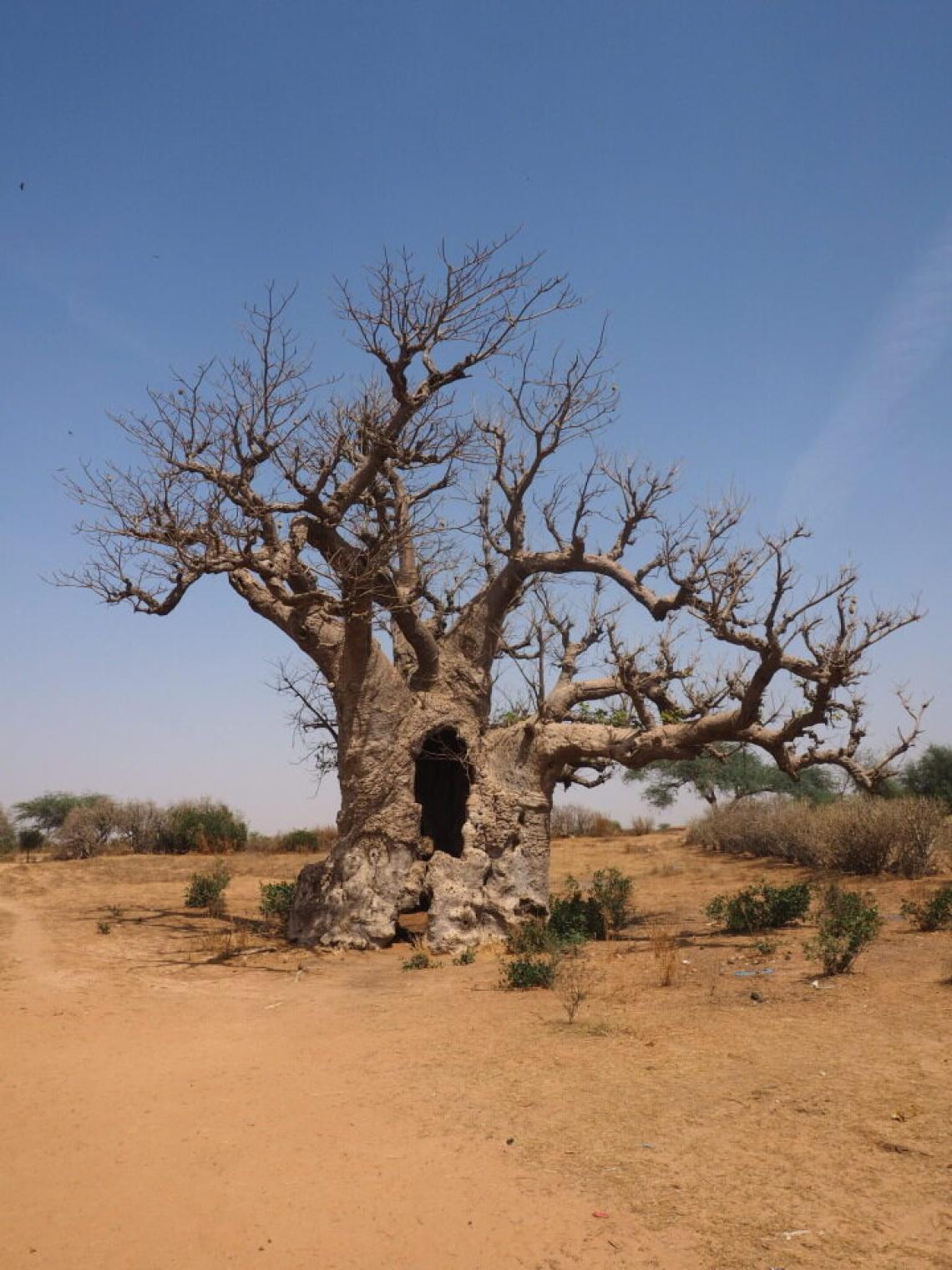In The Gambia and Senegal, baobab trees are significant both ecologically and culturally:
Ecological Importance
- Water Storage:Baobabs are adapted to arid conditions and can store large quantities of water in their trunks, which is crucial during dry periods.
- Biodiversity: They provide habitat and food for a variety of wildlife, including birds, bats, and insects. Their flowers, leaves, and fruit are used by various species.
Cultural Significance
- Traditional Use: Baobabs are central to local traditions and folklore. They are often seen as symbols of life and endurance. In some communities, they are considered sacred or have historical significance.
- Community Role: The trees often serve as meeting points or landmarks in rural areas, where people gather for social and communal activities.
Economic Value
- Nutritional Value: The baobab fruit is rich in vitamin C, fiber, and antioxidants. It is used in local cuisine and traditional medicine.
- Crafts and Materials: The bark and wood are utilized for making ropes, baskets, and other traditional crafts.
Conservation
- Challenges: Baobabs face threats from climate change, deforestation, and agricultural expansion. Conservation efforts are important to ensure their survival and continued role in local ecosystems and cultures.

Post your comment
Comments
No one has commented on this page yet.
RSS feed for comments on this page | RSS feed for all comments